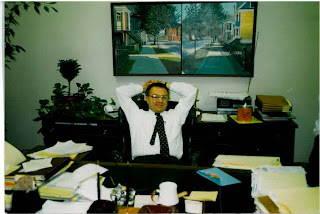My father, who also practiced family law, died in 1991. At
that time, the fax machine was cutting-edge technology. In 1991, we still used
books to research the law and while we used rudimentary computers, we weren’t
yet completely dependent on them.
The other day I was thinking about how my dad would adapt to
the modern law office. I remember how much trouble he had with his 5 pound cell
phone; and I can only guess he would still be dictating to Marge, his
secretary, as he did then. But while so many things have changed, the core of
what we do has remained the same. We are still in the business of solving
problems. While discovery has gotten completely out of control, the same basic
procedures that applied then apply now. We still deal with fragile people at a
very delicate time in their lives. Like then, we still need to balance empathy
with action and advocacy with common sense.
In most respects, the practice of family law has changed
little in the 21 years since David left us. I think about him often and wonder
how he would look at things in our modern world. But I'm certain his mantra wouldn’t change,”
take care of yourself and your family, take care of your clients, and take care
of the profession.” Timeless principles.

